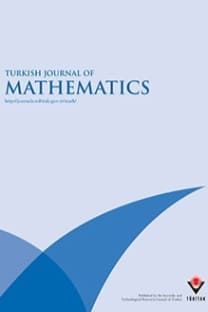An identity between the m-spotty weight enumerators of a linear code and its dual
Linear codes over F2+uF2, m-spotty weights, MacWilliams identity
An identity between the m-spotty weight enumerators of a linear code and its dual
Linear codes over F2+uF2, m-spotty weights, MacWilliams identity,
___
- Table 2. The codewords and the corresponding terms. Codewords v1 v F0(z)F1(z)F2(z)F3(z) F0(z)F(z) = 1 + 72z + 1350z+ 1944z3+ 729z4
- F2(z)F(z) = 1 + 32z− 114z2+ 81z4 F2(z)F2(z) = 1− 8z + 22z2− 24z3+ 9z4 F1(z)F1(z) = 1 + 16z + 46z2− 144z3+ 81z4 F(z)F3(z) = 1 + 8z− 10z2− 8z3+ 9z4 F3(z)F3(z) = 1− 2z2+ z4 (i = 11, 12, 15, 16) vi F0(z) = 1 + 36z + 27z2,F1(z) = 1 + 8z− 9z2, F2(z) = 1− 4z + 3z2, and F3(z) = 1− z2.
- ISSN: 1300-0098
- Yayın Aralığı: 6
- Yayıncı: TÜBİTAK
Structure theory of central simple $Bbb{Z}_d$-graded algebras
Flat surfaces in the Minkowski space $Bbb{E}_{1}^{3}$ with pointwise 1-type Gauss map
Results of generalized local cohomology modules of a-minimax modules
Flat surfaces in the Minkowski space E31 with pointwise 1-type Gauss map
Bruhat-Chevalley order on the rook monoid
Mahir Bilen CAN, Lex E. RENNER
p-Rank and p-groups in algebraic groups
An identity between the m-spotty weight enumerators of a linear code and its dual
Extensions and s-comparability of exchange rings
